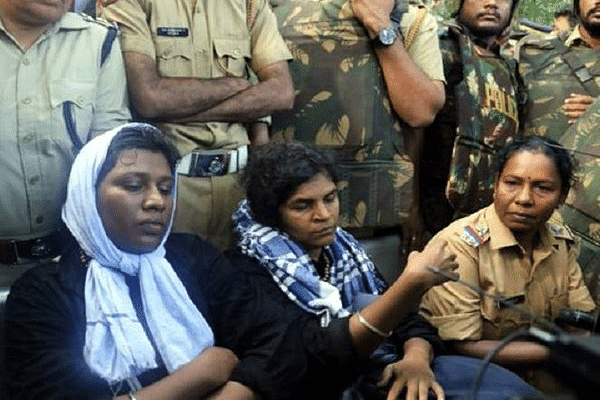Insta
‘First Women In 10-50 Age Group To Enter Sabarimala?’: Kerala PSC Scraps Question Following Backlash

Two women, Bindu (left) and Kanaka Durga (right), entered the Ayyappa temple at Sabarimala on 2 January. (Twitter)
After stirring up a controversy, the Kerala Public Service Commission (KPSC) has decided to omit the question regarding the entry of young women in Sabarimala, which appeared in an examination 3 April, reports Times of India.
“Who were the first women to have entered the Sabarimala Ayyappa temple as per the Supreme Court ruling?” was a question appeared in an in the online exam for the appointment of Assistant Professor (Psychiatry) for medical education department held on 3 April.
The multiple he multiple choice question had options (a) Bindu Thankam Kalyani, CS Libi (b) Bindu Ammini, Kanakadurga (c) Sasiakala, Sobha (d) Surya Devarchana, Parvathi..
The answer key indicated option (b) as the correct answers, while the other options had the names of activists who tried to enter Sabarimala post the 28 September verdict and the name of Hindu Aikyavedi state president Sasikala as well as BJP state general secretary Shobha Surendran as well.
Following a massive backlash from social media, the PSC decided to pull back the question. It has also recommended action against the person who had prepared the question paper which featured the controversial question.
Bindu Ammini and Kanaka Durga had entered the Sabarimala Ayyappa temple on 2 January following the 28 September Supreme Court verdict that set aside the centuries-old tradition of restricting women belonging to the age group of 10 and 50 from entering the temple sanctum.
Bindu, hailing from Koyilandy in Kozhikode district, and Kanaka, from Malappuram district in Kerala, entered the sanctum sanctorum at 3.45 am.
Introducing ElectionsHQ + 50 Ground Reports Project
The 2024 elections might seem easy to guess, but there are some important questions that shouldn't be missed.
Do freebies still sway voters? Do people prioritise infrastructure when voting? How will Punjab vote?
The answers to these questions provide great insights into where we, as a country, are headed in the years to come.
Swarajya is starting a project with an aim to do 50 solid ground stories and a smart commentary service on WhatsApp, a one-of-a-kind. We'd love your support during this election season.
Click below to contribute.
Latest